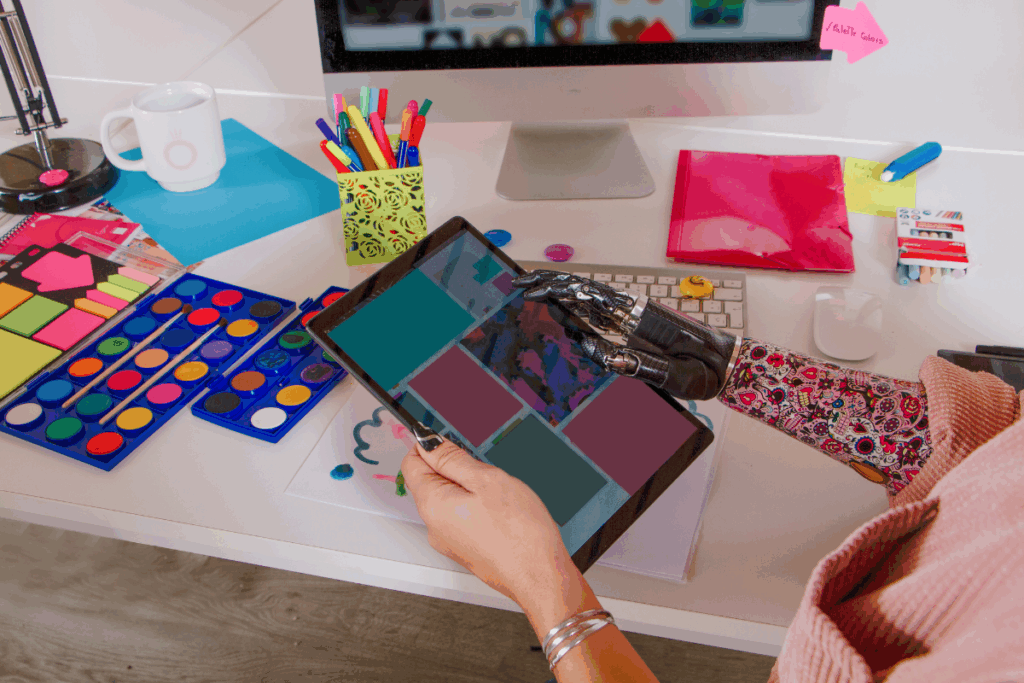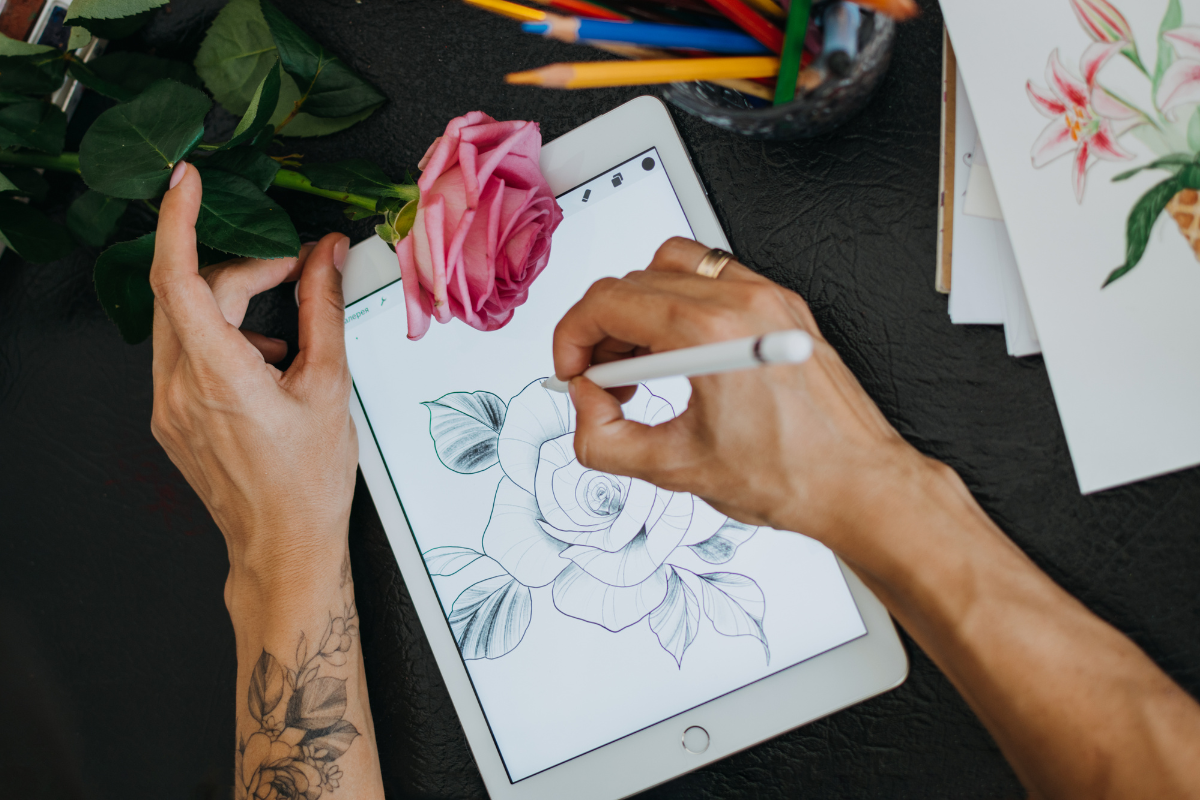Imagine strolling through Haji Lane, where every wall bursts with colour and creativity, or sitting in a cosy digital art workshop in Ang Mo Kio, stylus in hand, learning how to bring your ideas to life. In Singapore, where innovation meets tradition, digital art is becoming one of the most exciting and accessible ways to express yourself. It’s not just a passing trend — it’s a growing part of how we tell stories, design characters, create games, and communicate ideas.
If you’re just starting out and wondering how to get into digital art, you’re not alone. Many beginners feel overwhelmed by the choices — from software and tablets to techniques and communities. But the good news is, you don’t need expensive tools or a formal education to get started. This guide is packed with down-to-earth, budget-friendly tips tailored for beginners in Singapore — whether you’re drawing for fun or dreaming of a creative career.
Embracing the Digital Shift
Why choose digital art?
Digital art offers unique advantages that make it both beginner-friendly and professionally viable. Features like undo, layers, and custom brushes allow for experimentation without fear of permanently “ruining” your work. The portability of tablets and the accessibility of free software mean you can practise anytime, anywhere.
Yet, a common misconception persists — that digital art is “easier” or less “real” than traditional media. In truth, the skills required overlap significantly, and many digital artists spend years mastering fundamentals such as lighting and anatomy. Digital tools are simply a different set of brushes, not a shortcut to mastery.
In Singapore, digital art is becoming increasingly significant across multiple industries — from animation and gaming to advertising and publishing. Institutions like Lucasfilm’s ILM Singapore, Ubisoft Singapore, and Bandai Namco are always on the lookout for skilled digital creators. The demand is real, and the opportunities are growing.
Getting Started: Your Essential Toolkit (Budget-Friendly Options)
Software Recommendations
- Free or Affordable Tools:
- Krita – Great for digital painting and illustration.
- GIMP – Best for photo editing and manipulation.
- Autodesk Sketchbook – User-friendly with a clean interface; ideal for sketching.
- MediBang Paint Pro – Designed for comic artists, complete with panel tools and screen tones.
- Paid Tools:
- Procreate (iPad only) – Intuitive and powerful, great for illustration and design.
- Clip Studio Paint – Popular among manga/comic artists; offers powerful linework and animation tools.
- Adobe Photoshop – Industry standard; suitable for everything from painting to compositing (available via monthly subscription).
Each tool has its strengths, so choose based on your intended focus — whether it’s concept art, comics, or character design.
Hardware Essentials
- Drawing Tablets:
- Wacom Intuos and Huion Inspiroy series are great entry-level options. Pressure sensitivity helps you control brush strokes with natural precision.
- Tablet Devices:
- An iPad with Apple Pencil is an investment but offers portability, ease of use, and access to apps like Procreate.
- Computer Considerations:
- If you opt for a traditional drawing tablet (without a screen), ensure your computer has decent specs — especially RAM and a good graphics processor — to handle your chosen software.
Fundamental Skills: Building Your Foundation
Even in digital art, traditional fundamentals remain crucial. The more you understand the basics, the better your art will be — no matter the medium.
- Traditional Art Skills: Master perspective, anatomy, composition, colour theory, and lighting. These form the visual language of compelling artwork.
- Layer Management: Learn to use layers for sketching, inking, colouring, and editing. Grouping and naming layers also boosts efficiency.
- Brushes and Blending: Don’t be afraid to experiment. Different brushes create different effects, and understanding opacity and flow helps with blending.
- Keyboard Shortcuts: Speed up your workflow by learning shortcuts like Ctrl+Z (undo), Ctrl+T (transform), and others specific to your software.
- Work at High Resolution: This ensures clean results for both screen and print. Aim for 300 DPI if you’re planning to print your work.
Learning and Growth in the Lion City
Online Resources
The internet is a goldmine of free and affordable learning content:
- YouTube – Channels like Aaron Blaise, Sinix Design, and Marc Brunet offer high-quality tutorials for beginners.
- Online Courses – Platforms like Skillshare and Udemy host structured classes on digital art basics and specialisations such as character design or background painting.
Local Workshops and Courses
Singapore offers various physical classes and art schools where you can learn hands-on:
- Visual Arts Centre (Dhoby Ghaut) – Offers digital art courses for different skill levels.
- LASALLE College of the Arts and Nanyang Academy of Fine Arts (NAFA) – Renowned institutions offering both short courses and full-time programmes.
- Singapore Polytechnic – Features modules in digital illustration and media arts.
- ART:DIS – Inclusive art programmes, including digital training for persons with disabilities.
Digital Art Communities in Singapore
Don’t underestimate the value of community. Surrounding yourself with like-minded creatives can provide motivation, feedback, and collaboration opportunities.
- Online Groups: Join Facebook groups like Singapore Digital Artists Network or Discord servers focused on digital art. Many host monthly challenges and share resources.
- Local Events: Attend events such as Singapore Art Week or GameStart Asia. These are great for exposure, networking, and staying inspired.
- Meetups and Exhibitions: Keep an eye out for community-hosted sketch meets or artist alley booths during conventions like Singapore Comic Con.
Practice, Persistence, and Patience
Mastery takes time. Every artist starts as a beginner — your early drawings may not match your vision, and that’s okay. Make a habit of drawing daily, even if it’s just 15 minutes. Track your progress monthly. Celebrate small wins. Don’t fear failure — it’s an essential part of learning.
Cultivating Your Unique Style
Finding your voice as an artist is a journey of self-discovery. Here’s how to begin:
- Experiment: Try different genres — character design, concept art, surreal landscapes, or even abstract expressionism.
- Reference, Don’t Copy: Study artists you admire to learn techniques, but always put your own spin on things.
- Create What You Love: Your passion will shine through in your work and make the process more rewarding.
Final Thoughts

Singapore’s vibrant digital ecosystem offers aspiring artists a dynamic platform to learn, grow, and create. From free software and affordable tablets to cutting-edge workshops and local art communities, the city is brimming with opportunities for beginners to explore digital art. Whether you’re sketching on your tablet at a café, experimenting with brushes in Procreate, or learning fundamentals at a Visual Arts Centre class, every step builds your foundation. Embracing digital doesn’t mean abandoning tradition — it means evolving with it. The journey may be filled with challenges, but with practice, patience, and persistence, progress is inevitable. Surround yourself with inspiring creators, seek feedback, and don’t be afraid to make mistakes. Remember, every masterpiece begins with a single line, and every artist was once a beginner. So take the leap, embrace the pixels, and let your imagination chart the path forward. Singapore’s creative future could very well begin with your next sketch.



